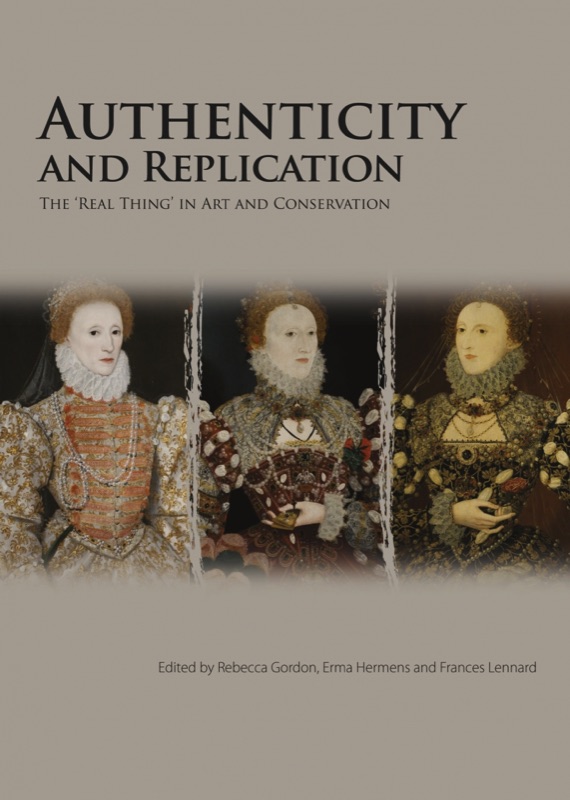What is the ‘real thing’ in cultural heritage? The papers in this book address the concepts of authenticity and replication for the interpretation, display and conservation of our cultural heritage.
In the West the value placed on ‘original’ materials has been central to our understanding of cultural heritage. While advances in conservation science provide detailed information on the tangible properties of objects, there is a growing emphasis on the importance of their conceptual framework and the context in which they were created. Therefore, we have to consider the value of different ways of representing objects and debate whether one stage of their history should take precedence over others. In this context, the potential use of replication broadens the discussion on authenticity and brings about additional challenges – in what circumstances does a replica gain significance as another form of the ‘real thing’?
While the concept of authenticity continues to be one of the core factors driving decision making in conservation and interpretation, new approaches towards the display and use of collections are challenging conventions, making the roles of curators, conservators, art historians and conservation scientists increasingly complex. The papers in this volume address this dilemma and provide a platform for the continued discussion of this valuable and intriguing subject.
Contents
Foreword
Acknowledgements
Opening thoughts
‘Indisputable authenticity’: engaging with the real in the museum
Mary M. Brooks
Challenging authenticities and the ‘real thing’
Bringing the past to life? Exploring the role of authenticity in developing young people’s historical understanding
Ceri Jones
Conservation of Japanese paintings on paper and silk: tradition and innovation
Keisuke Sugiyama
Baskinta’s Mother(s) of God: one strainer with two paintings found in the Convent of Saint Sassine in Lebanon
Kerstin Khalife, Cristoph Krekel and Aline El Maalouf
Twenty-first century approaches to reframing Italian Renaissance panels at the National Gallery
Harriet O’Neill
Differing interpretations of the authenticity of an Ushak carpet from The Metropolitan Museum of Art
Giulia Chiostrini
‘And I know damned-well what he wanted!’: deliberate alteration and interpretations of intent in several late sculptures by David Smith
Richard Mulholland
The Triumph of the Virgin: unravelling authenticities in a Glasgow Museums’ tapestry
Sarah Foskett
Identifying and pursuing authenticity in contemporary art
Rebecca Gordon
Artist in conversation
‘Real Life’ questions of authenticity
Ross Sinclair
Replication and its relationship with the ‘real thing’
Definitions of authenticity: a study of the relationship between the reproduction and original Gone With The Wind costumes at the Harry Ransom Center
Jill Morena
Calling authenticity into question: investigating the production of versions and copies in Tudor portraiture
Sophie Plender and Polly Saltmarsh
Rediscovering the Unicorn tapestries
Caron Penney
Stitching the twenty-first century into a Gilded Age Mansion
Alexandra Allardt
Dressing up for the Preston Guild: a ‘very admirable and correct costume!’
Uthra Rajgopal
Authenticity in the revival of Orthodox ecclesiastical embroidery in post-Soviet Russia
Luba Dovgan Nurse, Dinah Eastop and Mary M. Brooks
Experiencing the authentic: the reconstruction of the Tingelstad frontal, a Norwegian altar frontal from the 13th century
Katrine Scharffenberg and Anne Milnes
How to keep what was intended to be temporarily functional? Reflections on decision-making for the conservation of polyurethane ready-to-wear fashion
Susana França de Sá, Joana Lia Ferreira, Ana Maria Ramos, Bárbara Coutinho and Rita Macedo
Cultural heritage online: questions of authenticity, authority and authorship
Anna Bülow and Dinah Eastop
 
Reviews
These papers cover a broad range of conservation disciplines and periods, documenting philosophical thinking as well as object-based research and treatment. The 'authenticity' of the artwork or artefact is of central concern to the conservation field but the scope of this text extends further, encompassing museum display, education and visitor experience. While there is no doubt that each paper stands alone, this is a volume worth reading in its entirety.
The Picture Restorer - No. 44, Spring 2014
The papers in this publication provide accessible insights into the complex, constantly shifting attitudes to the 'authentic' and the 'real thing', and discuss where conservation sits in this evolving process. For me the beauty of the book is the variety of the reflective object-based case-studies presented, the diversity of the backgrounds and tone of the writers. [...]
The papers offer an excellent introduction to the concept of authenticity as a core factor driving decision making in conservation and interpretation and should, I feel, be placed on every conservation student's reading list.
ICON News - December 2014
